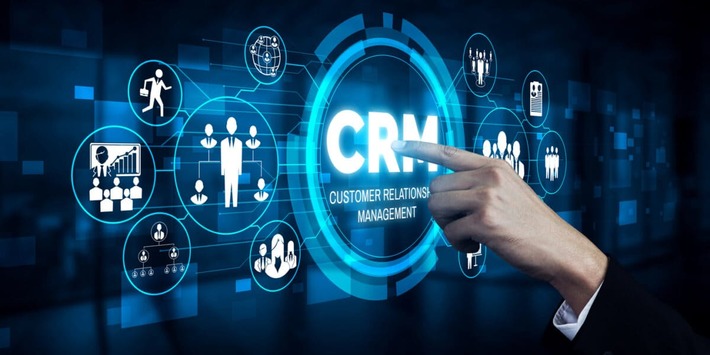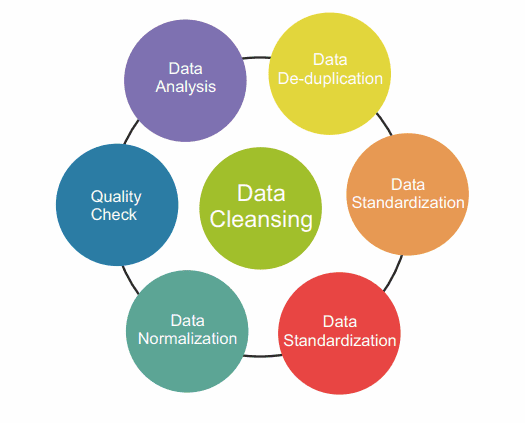
Source: istockphoto
Your Customer Relationship Management (CRM) software is the mother source you leverage for effective client communication. It is also the key to achieving personalized sales targeting and planning future marketing campaigns. So, it should come as no surprise that meticulously maintaining the data entering your CRM should be a top business priority.
But that is not always the case, is it? Your CRM is, after all, a dynamic entity overwhelmed by the magnitude of customer data pouring in every second. Can you sort through the volume and mine the data most beneficial to you? Sure, you can, so long you know where to look!
In this post, we bring you the five most common issues, a.k.a., problem areas with your CRM dataset along with their solutions.
1. Incomplete Data Entries
Perhaps the most common problem with your CRM dataset is of shoddily completed data entries. You open your dashboard only to find certain elements of information missing. Incomplete entries can include missing email addresses, incorrect names with missing titles, unlisted phone numbers, and many others problems. Such an erroneous dataset makes it impossible for you to deploy an effective marketing campaign, no matter how great your product.
Solution:
Train your sales and marketing teams or customer service professionals to ask for complete contact information from buyers. If needed, prepare a policy blueprint for these teams on how to collect data from customers. Also, instruct them only to update customers who have provided complete contact information.
Furthermore, integrate purchasing and invoicing data with your CRM so the information flow is complete. When you have data coming from all in-house sources, it can help complete every buyer’s profile. Check your CRM’s configuration to verify if it is capturing all the data from multiple sources.
2. Eroded or Decayed Records
If you want your marketing efforts to die a slow death, send out emails or newsletters using decayed CRM data. Clients who have abandoned their old email addresses or phone numbers fall within this category. If your marketing team is experiencing too many hard bounces, know that your CRM data contains a significant amount of stale information.
Solution:
One way to counter this issue is by confirming an old customer’s contact information whenever you get a chance to come in direct contact with them. For instance, if your customer service team receives an inbound buyer call, quickly reconfirm their contact details.
You can also hire third parties to scrub and cleanse your outdated CRM data. Companies that offer data cleansing services cross-reference your databases with theirs and weed out the decayed information. They also append entries and add new contacts if you need them. Choosing this alternative can quickly get your CRM data in top form. Shown below is the process they employ for thorough data cleansing.

Source: Span Global Services
3. Falling Short on Adequate Leads
Are you marketing to the same buyer base repeatedly? This happens when your CRM data does not have enough new contacts to market to! Ensuring that you have enough leads pouring into your CRM software is a critical challenge countless organizations jostle with.
Solution:
While good CRM software helps you stay connected and nurture current customers, it cannot assist you with scouting fresh prospects. For this, you need to go “all hands on deck” with your sales and marketing teams. Get them to ramp up their efforts to get new prospects into your sales pipeline.
4. Adhering to Data Compliance Norms
Privacy and security concerns around customer data are rapidly evolving, so should your practices! Believe it or not, often buyer data that enters an organizations CRM application is unethically sourced. Reaching out to such contacts can have serious repercussions that may lead to penal action. If you think data compliance is not one of your worries, know that a study by Dun and Bradstreet reveals that companies listed “protecting data privacy” as their top customer data issue.
Solution:
Start adhering to GDPR norms and educate your employees about them by conducting an extensive workshop, if needed. The EU General Data Protection Regulation (GDPR) is a ready policy that you can apply to your customer data practices. So why reinvent the wheel when you already have one in the form of the GDPR norms?
5. Underutilizing the CRM Software
There is a wealth of features a CRM software comes with that can boost your data utilization. But, countless organizations fail to exploit its full potential. Studies conclude that a whopping 43% of CRM users leverage less than half the features their CRM software offers. How come? Is it because the learning curve is too steep? Were they not given enough time or training to adapt to a new CRM application? It can be a little bit of both. However, in most cases, it is the unawareness of a software’s potential that leaves it underutilized.
Solution:
Get your CRM supplier to deploy a training module or workshop on a rolling basis. Get them under contract to train employees every time a fresh batch rolls in. Provide your CRM users the correct contact details of the trouble-shooters if they need to use a novel feature but cannot understand how to.
The Bottom Line
You’re now well-equipped to approach your CRM data and the software that houses it with a fresh pair of eyes. Armed with the knowledge on issues that hover around CRM data, you can now forge more meaningful relationships with your prospects as well as customers.
